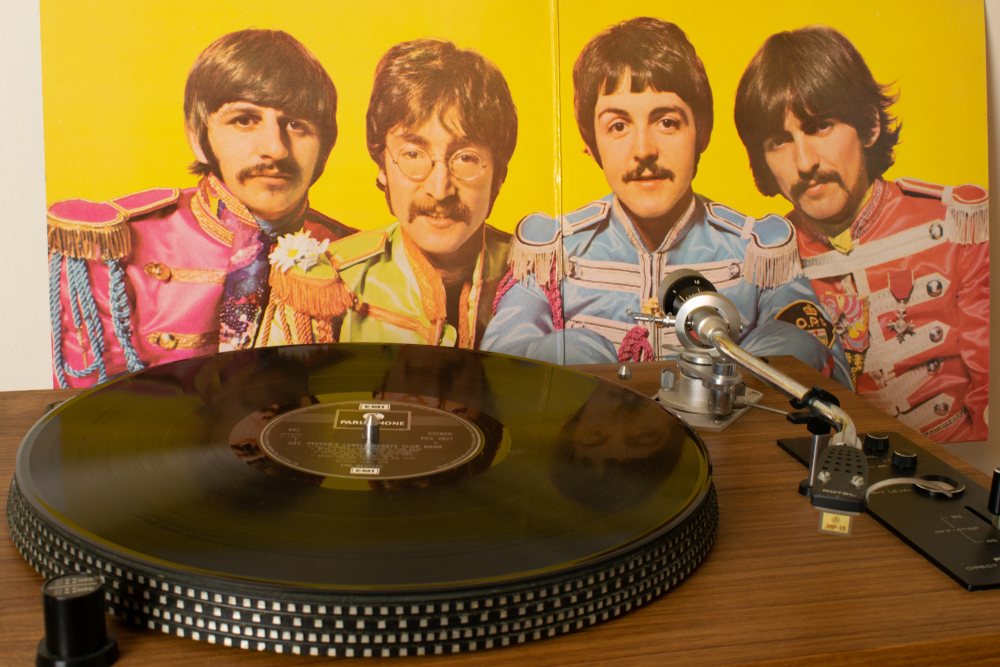Progressive rock in the United Kingdom
Somewhere between the psychedelic free-flowing jams of the late ’60s and the stadium spectacles of the ’80s, progressive rock found its home in the United Kingdom. It was the sound of uninhibited artistic exploration—rock music infused with symphonic grandeur, jazz complexity, and a storytelling depth rarely seen in rock. At its peak, it was rock music for the intellectually curious, a genre that valued virtuosity, experimentation, and an uncompromising dedication to artistic integrity. It was also a movement that sparked as much devotion as derision, dismissed by critics as self-indulgent excess while selling millions of albums to dedicated fans.
The Birth of Progressive Rock: Late ’60s and Early ’70s
The roots of progressive rock stretch back to the British underground scene of the late ’60s, a time when bands like The Moody Blues and The Beatles were expanding the boundaries of rock.

The Moody Blues’ Days of Future Passed (1967), with its big instrumentals and a clear theme, was a glimpse of what was to come. But it was King Crimson who truly defined the movement with In the Court of the Crimson King (1969). That album’s blend of symphonic grandeur and raw intensity was unlike anything that had come before.
As the ’70s dawned, a wave of British bands took up the prog mantle. Genesis, led by Peter Gabriel, delivered sprawling narratives with The Lamb Lies Down on Broadway (1974). Yes embraced baroque complexity, with albums like Close to the Edge (1972) featuring 20-minute compositions that felt more like sonic odysseys than rock songs. Meanwhile, Emerson, Lake & Palmer (ELP) fused classical motifs with bombast, Keith Emerson’s keyboard pyrotechnics transforming rock concerts into high-art performance pieces.
Prog’s Peak Years: Mid-’70s Excess and Experimentation
If the early ’70s saw prog rock find its identity, the mid-’70s saw it ascend to new heights—and new levels of excess. Pink Floyd, who had started as a psychedelic band under Syd Barrett, evolved into prog’s most commercially successful act. The Dark Side of the Moon (1973) was a masterpiece of sonic cohesion, a concept album that fused philosophical explorations with studio technical mastery. Its follow-up, Wish You Were Here (1975), was an elegy for Barrett, while Animals (1977) took a darker, more political turn.

Then came The Wall (1979), an operatic spectacle that pushed the limits of rock storytelling. A deeply personal and politically charged album, it chronicled the isolation of a rock star spiraling into madness, mirroring Roger Waters’ own disillusionment with fame. The Wall remains one of the most iconic concept albums ever recorded.
Elsewhere, Jethro Tull added flute-driven folk influences to the mix with Aqualung (1971) and Thick as a Brick (1972), the latter presented as a single song spanning both sides of an LP. Meanwhile, Gentle Giant pursued a more cerebral form of prog, twisting time signatures and counterpoint melodies into something closer to avant-garde chamber music.
But with all this innovation came a growing backlash. Punk rock’s emergence in the mid-to-late ’70s was, in part, a response to prog’s perceived pretentiousness. Johnny Rotten wore an ‘I Hate Pink Floyd’ T-shirt, and the Ramones’ three-chord anthems were a direct challenge to the musical complexity of bands like Yes and ELP. The age of 20-minute epics was being overshadowed by two-minute bursts of raw energy.
The Fall and Rebirth: The ’80s and Beyond
By the early ’80s, the grand era of progressive rock was fading. Yes, Genesis, and King Crimson all adapted to the times—Genesis became a mainstream powerhouse under Phil Collins, Yes embraced slick, polished commercial sound with 90125 (1983), and King Crimson re-emerged with a more angular, new wave-inspired sound on Discipline (1981). Other bands, like ELP, struggled to stay relevant, while some, like Gentle Giant, faded into obscurity.
Yet, progressive rock persisted. In the late ’80s and early ’90s, a new generation of bands carried the legacy forward. Marillion carried the old-school prog ethos into the MTV era with albums like Misplaced Childhood (1985). Porcupine Tree, Opeth, and Steven Wilson would later take prog into darker, heavier, and more atmospheric realms.
Pink Floyd’s Last Word: The Division Bell
And then, in 1994, came The Division Bell, Pink Floyd’s last proper album and an unexpected final statement from one of prog rock’s defining bands. Gone was the tension that had fueled The Wall and The Final Cut. Instead, The Division Bell was spacious and reflective, its themes centered on communication and understanding.
The album’s closing track, High Hopes, stands as one of Pink Floyd’s most poignant songs. With its melancholic piano intro, soaring slide guitar, and introspective lyrics, High Hopes, evokes a journey through past memories, marked by both nostalgia and a sense of loss.







